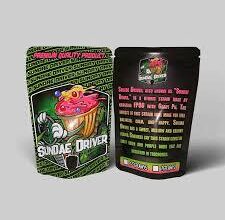In the dynamic landscape of textile manufacturing, innovation is the cornerstone of progress. As the global demand for high-performance textile fibers continues to soar, the integration of advanced materials has become imperative to meet evolving consumer preferences and industry standards. At the forefront of this transformation is carbon black, a versatile additive that is reshaping the textile fibers market and driving unprecedented levels of performance and durability.
Data Bridge Market Research analyses that the carbon black for textile fibers market is expected to reach USD 1,486.56 million by 2030, which was USD 905.00 million in 2022, registering a CAGR of 6.50% from 2023 to 2030. In addition to the insights on market scenarios such as market value, growth rate, segmentation, geographical coverage, and major players, the market reports curated by the Data Bridge Market Research also include in-depth expert analysis, geographically represented company-wise production and capacity, network layouts of distributors and partners, detailed and updated price trend analysis and deficit analysis of supply chain and demand.
Definition
The incomplete combustion of petroleum compounds such as ethylene cracking tar, FCC tar, coal tar, and vegetable matter produces carbon black. Carbon black is a polycrystalline carbon with a high surface-area-to-volume ratio. It differs from ash because it has a significantly larger surface-area-to-volume ratio and comprises far fewer polycyclic aromatic hydrocarbons. Carbon black is mostly used in the textile industry as a coloring agent. It imparts long-lasting, deep black color and a bluish undertone to textile products.
Unraveling the Potential of Carbon Black:
Carbon black, a finely divided form of carbon, has long been recognized for its remarkable properties and diverse applications across various industries. In the realm of textile fibers, carbon black serves as a multifaceted additive that imparts a host of beneficial characteristics, ranging from enhanced color intensity and UV resistance to improved mechanical strength and conductivity.
Key Trends and Innovations:
The global carbon black for textile fibers market is witnessing a paradigm shift, driven by several key trends and innovations:
- Enhanced Coloration: Carbon black serves as a potent colorant, endowing textile fibers with deep, rich hues that resist fading and maintain vibrancy over time. From jet black to subtle shades of gray, carbon black enables precise color customization, catering to the diverse needs of designers and manufacturers.
- UV Protection: In an era characterized by heightened environmental awareness, UV protection has emerged as a paramount consideration in textile design. Carbon black-infused fibers exhibit exceptional UV resistance, shielding wearers from harmful solar radiation and minimizing the risk of skin damage and premature aging.
- Reinforced Durability: Textile fibers enhanced with carbon black boast superior mechanical strength and abrasion resistance, ensuring longevity and performance in diverse applications. From sportswear and outdoor gear to automotive upholstery and industrial textiles, carbon black-reinforced fibers withstand the rigors of daily use and maintain their integrity under challenging conditions.
- Conductive Properties: Carbon black’s inherent conductivity makes it an ideal additive for textile fibers designed for electronic applications, including smart textiles, wearable sensors, and e-textiles. By facilitating seamless integration with electronic components, carbon black enables the development of innovative textile solutions that merge fashion with functionality.
Looking Ahead:
As the textile industry continues to evolve, the demand for carbon black for textile fibers is poised for exponential growth. Manufacturers are investing in research and development to unlock new applications and harness the full potential of carbon black as a transformative additive. From sustainable sourcing practices to advanced manufacturing techniques, the future of the carbon black for textile fibers market is characterized by innovation, sustainability, and performance-driven solutions.
Conclusion:
The global carbon black for textile fibers market represents a nexus of innovation and opportunity, driving the next wave of advancement in textile manufacturing. As consumer expectations evolve and sustainability concerns take center stage, carbon black emerges as a versatile solution that transcends traditional boundaries and catalyzes positive change. Together, let us embrace the limitless possibilities of carbon black and usher in a new era of excellence in textile fibers.
Read More : https://www.databridgemarketresearch.com/reports/global-carbon-black-for-textile-fibers-market





